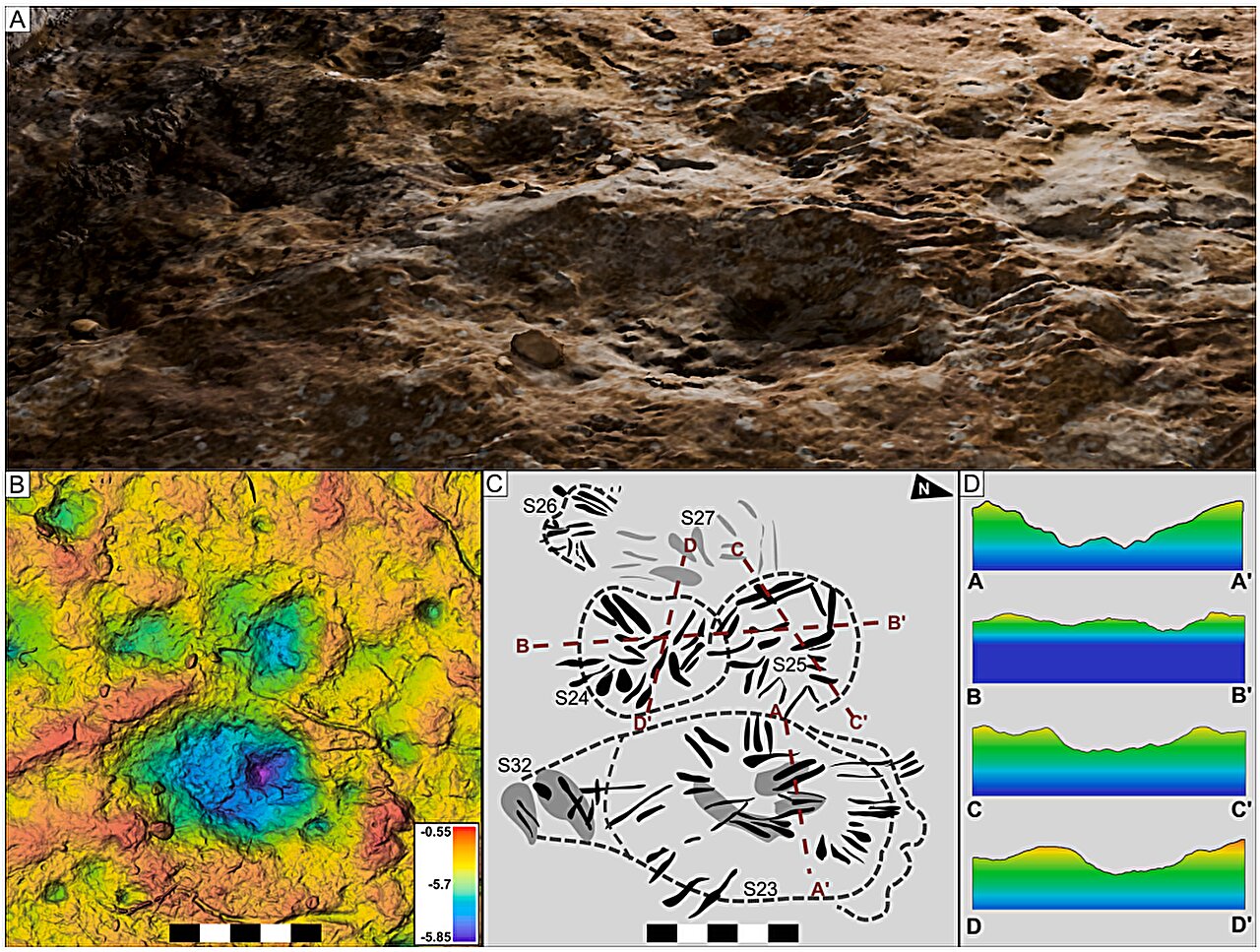A groundbreaking discovery at Colorado’s Dinosaur Ridge suggests it may be the largest known dinosaur mating dance arena ever found. This revelation, published in the journal Cretaceous Research, comes from a team of paleontologists and researchers who utilized drone imagery to explore the historic site.
Located near Morrison, Colorado, Dinosaur Ridge has been a rich source of dinosaur fossils since the late 1800s. The recent study focused on an area at the base of the ridge, once a tidal flat that experienced periodic flooding. Previous research had identified several dinosaur “lekking” spots in the region.
Unveiling the Dinosaur Lekking Spots
The concept of lekking, where males perform elaborate dances to attract females, is not just a modern avian behavior. The study’s authors note that similar behaviors were exhibited by dinosaurs, leaving behind distinctive footprints and scrape marks. To gain insights, the researchers analyzed drone imagery captured by the U.S. Geological Survey in 2019 and 2024.
The images revealed multiple lekking spots, indicating that the entire site might have been a single, extensive lekking area. This discovery was significant, as direct access to the site is restricted to prevent damage to the historical evidence.
Drone Imagery and New Insights
The drone imagery provided a detailed view of the lekking spots, uncovering two distinct types of marks: bowl-like depressions and long, thin scrapes. These variations suggest different behaviors, such as display rituals and nest building. The study also found evidence of marks in different strata, indicating that various dinosaur species used the site over time, each with unique dancing styles, such as claw dragging.
“The diversity of marks points to a rich tapestry of dinosaur behavior, echoing the complex social structures we observe in modern birds,” said Dr. Emily Carter, a paleontologist involved in the study.
Comparative Analysis with Other Sites
In addition to examining Dinosaur Ridge, the research team compared its lekking spots with those at other sites in Colorado and Alberta, Canada. The similarities in the formations across these locations bolster the argument that Dinosaur Ridge might be the largest dinosaur lek discovered to date.
Such findings not only enhance our understanding of dinosaur behavior but also provide a glimpse into the prehistoric ecosystems that once thrived in North America. The comparison with other sites offers a broader context for interpreting the behaviors and environmental conditions of the Cretaceous period.
Implications for Paleontology
The discovery of these extensive lekking spots at Dinosaur Ridge could reshape our understanding of dinosaur social behavior and mating rituals. It also underscores the importance of using modern technology, like drones, to explore and document paleontological sites that are otherwise inaccessible.
“This study exemplifies how technological advancements can revolutionize our approach to studying ancient life,” commented Dr. Michael Thompson, a leading expert in dinosaur ecology.
Future Research and Conservation Efforts
Looking ahead, the research team plans to continue their study of Dinosaur Ridge, hoping to uncover more about the species that once inhabited the area. They also emphasize the need for ongoing conservation efforts to protect these invaluable sites from erosion and human interference.
As the scientific community delves deeper into these findings, the implications for our understanding of dinosaur behavior and evolution are profound. The study not only highlights the intricate social dynamics of these ancient creatures but also serves as a reminder of the rich history embedded in the earth beneath our feet.
The research, authored by C.C. Buntin and colleagues, is a testament to the meticulous work of scientists dedicated to unraveling the mysteries of our planet’s distant past. As new technologies continue to emerge, the potential for further discoveries at Dinosaur Ridge and beyond remains vast.
